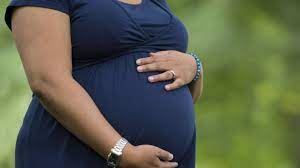 Addressing maternal health disparities will be a key priority as federal lawmakers return for their final session of the year, two Illinois Congress members said Tuesday. [Health News Illinois]
Addressing maternal health disparities will be a key priority as federal lawmakers return for their final session of the year, two Illinois Congress members said Tuesday. [Health News Illinois]
U.S. Reps. Lauren Underwood, D-Naperville, and Robin Kelly, D-Matteson, told reporters during a virtual event held Tuesday by the advocacy group Protect Our Care that they have spoken to Democratic leadership in the House and Senate about taking up several proposals related to maternal health in its end-of-the-year agenda, including extending postpartum Medicaid coverage from 60 days to one year in all states.
“Now that the election is behind us, it is time to roll up our sleeves and get to work on passing these important priorities in the end-of-the-year package,” Kelly said.
Underwood also renewed calls to pass her maternal health omnibus, which includes investments for community-based organizations, perinatal workforce, improving data collection processes and addressing the social determinants of health.
Tuesday’s press conference comes as the future makeup of the House remains uncertain, with election results continuing to come in. Analysts expect Republicans to retake control of the chamber.
Both Kelly and Underwood said they understood there will be many legislative priorities pushed by their colleagues in the coming weeks, but added that maternal health cannot wait any longer.
A recent report from the Government Accountability Office, requested last year by Underwood, Kelly, and five other representatives, found the maternal death rate for Black women was 68.9 per 100,000 live births in 2021, compared to 44 in 2019. White women saw their death rates rise from 17.9 to 26.1 during that time, while Latinx women’s death rates went from 12.6 to 27.5.
“These statistics are tragic and unacceptable,” Underwood said Tuesday. “They are an urgent call to action that we have a responsibility to answer.”
###
